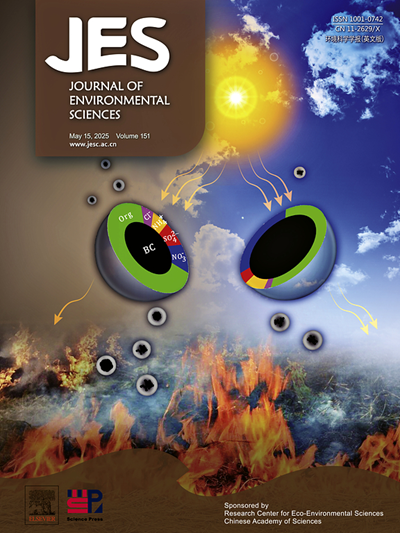Impact of Microcystin-LR exposure on biochemical responses, transcriptomic profiles, gut microbiota, and growth performance in grass carp (Ctenopharyngodon idella)
IF 5.9
2区 环境科学与生态学
Q1 ENVIRONMENTAL SCIENCES
引用次数: 0
Abstract
In recent years, Microcystin-LR (MC-LR) has been frequently detected in aquatic environments, exerting detrimental effects on the health of aquatic organisms. The grass carp (Ctenopharyngodon idella), an economically important fish, inhabits environments prone to MC-LR contamination. To investigate the toxicological mechanisms of MC-LR on grass carp, the fish were exposed to water containing 35.8 µg/L MC-LR. The physiological, biochemical, gut microbiota, and transcriptomic responses of the grass carp were evaluated at various time points (days 0, 1, 3, 7, and 21). The results showed that total superoxide dismutase activity in the liver and intestine was significantly increased after 21 days of exposure. Additionally, pathological damage was observed, including impaired intestinal epithelial barrier and nuclear pyknosis in the liver cell. MC-LR exposure also altered the diversity and composition of the gut microbiota and reshaped the microbiota interaction network, increasing the abundance of Cetobacterium and Vibrio by 32.43 % and 25.7 %, respectively. The intestinal microbiota functions were enriched in carbohydrate metabolism (10.45 %) and amino acid metabolism (9.89 %). RNA sequencing identified 504 shared differentially expressed genes (DEGs). The expression of the immune genes ITGB1 and GART was significantly upregulated in the D21 group. The upregulated DEGs were enriched in the complement and coagulation cascade pathways. MC-LR exposure induced metabolic disorders in grass carp, with upregulated genes significantly enriched in amino acid and carbohydrate metabolism pathways, while downregulated genes were enriched in lipid metabolism. This study provides valuable insights into the effects and toxicological mechanisms of MC-LR on aquatic organisms.
微囊藻毒素- lr暴露对草鱼生化反应、转录组学特征、肠道微生物群和生长性能的影响
近年来,微囊藻毒素(microcytin - lr, MC-LR)在水生环境中被频繁检测到,对水生生物的健康造成了不利影响。草鱼(Ctenopharyngodon idella)是一种重要的经济鱼类,生活在易受MC-LR污染的环境中。为了研究MC-LR对草鱼的毒理学机制,我们将草鱼暴露在含有35.8µg/L MC-LR的水中。在不同的时间点(0、1、3、7和21天)评估草鱼的生理、生化、肠道微生物群和转录组反应。结果表明,处理21 d后,肝脏和肠道总超氧化物歧化酶活性显著升高。此外,观察到病理损伤,包括肠上皮屏障受损和肝细胞核固缩。MC-LR暴露还改变了肠道微生物群的多样性和组成,重塑了微生物群相互作用网络,使鲸杆菌和弧菌的丰度分别增加了32.43%和25.7%。肠道菌群功能主要集中在碳水化合物代谢(10.45%)和氨基酸代谢(9.89%)。RNA测序鉴定出504个共享差异表达基因(DEGs)。D21组免疫基因ITGB1和GART的表达显著上调。上调的deg在补体和凝血级联途径中富集。MC-LR暴露诱导草鱼代谢紊乱,上调基因显著富集于氨基酸和碳水化合物代谢途径,下调基因富集于脂质代谢途径。本研究对MC-LR对水生生物的影响和毒理学机制提供了有价值的见解。
本文章由计算机程序翻译,如有差异,请以英文原文为准。
求助全文
约1分钟内获得全文
求助全文
来源期刊

Journal of Environmental Sciences-china
环境科学-环境科学
CiteScore
13.70
自引率
0.00%
发文量
6354
审稿时长
2.6 months
期刊介绍:
The Journal of Environmental Sciences is an international journal started in 1989. The journal is devoted to publish original, peer-reviewed research papers on main aspects of environmental sciences, such as environmental chemistry, environmental biology, ecology, geosciences and environmental physics. Appropriate subjects include basic and applied research on atmospheric, terrestrial and aquatic environments, pollution control and abatement technology, conservation of natural resources, environmental health and toxicology. Announcements of international environmental science meetings and other recent information are also included.
 求助内容:
求助内容: 应助结果提醒方式:
应助结果提醒方式:


